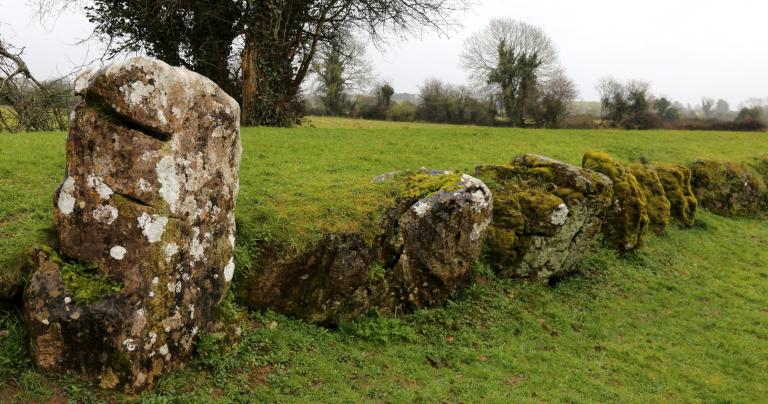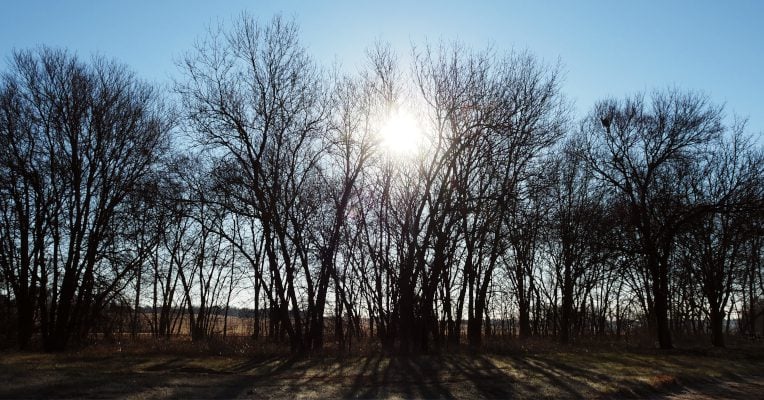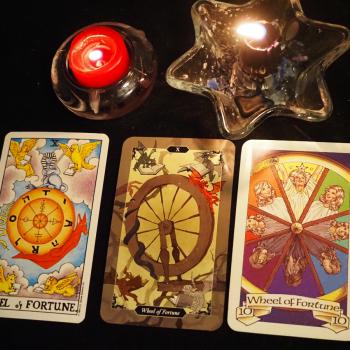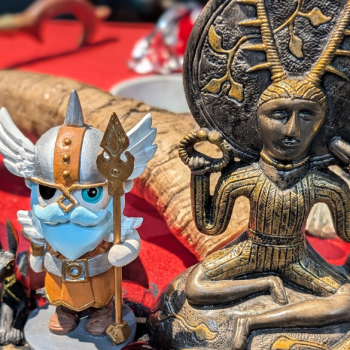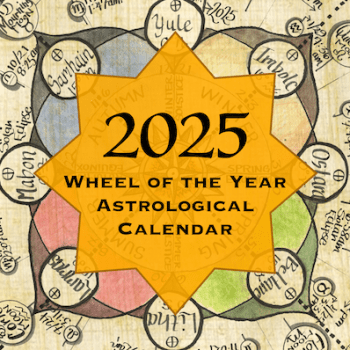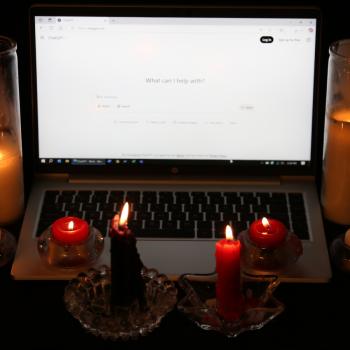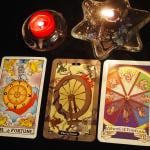Last week I listened to the most recent episode of Down at the Crossroads with Chris Orapello and Tara-Love Maguire. Jason Mankey was their guest, and most of the discussion was on Jason’s book The Horned God of the Witches, which I have not read but need to read before too much longer.
In the final segment they discussed the question of religious and spiritual authenticity, and how too many people are looking for it in the past instead of in the present.
This is an issue I feel strongly about. Rather than insert myself into Chris, Tara, and Jason’s conversation, I’m going to make my own case for why our search for authenticity needs to focus on the present and not on the past.
What do we mean by “authentic”?
Merriam-Webster’s online dictionary lists five different definitions of “authentic” including “worthy of acceptance or belief” and “true to one’s own personality, spirit, or character.” If something is authentic then it’s true and it’s worthy of our attention, our devotion, our practice.
For too many people, this is assumed to mean “doing it like they did way back when.”
What we know of our ancestors’ religions is a treasure. In a just world, we would have an unbroken line of belief and practice going back to our Celtic, Norse, Greek, Egyptian, and other ancestors. We wouldn’t have to rely on what can be pieced together by historians and archaeologists. We would be part of a living tradition.
That doesn’t mean the “best” way would be self-evident. Christianity has an unbroken line reaching back, if not to Jesus, then at least to the first Christians. And yet there are thousands of Christian denominations that vary wildly in belief and practice, ranging from the Disciples of Christ (who are progressive Mainline Protestants) to the Russian Orthodox Church.
Clearly, having an unbroken line tells us nothing about the authenticity of a tradition.
The myth of the Golden Age
Perhaps the biggest reason people look to the past for authenticity is the myth of the Golden Age.
This myth says there was a time when things were right. It was the time when the founder of the religion was still alive and directing things personally (who’s the founder of Christianity? It’s not Jesus. I would argue it’s Paul – Saul of Tarsus. But that’s another topic for another time… and probably, for another blog). Or, for indigenous religions that have no founders, it’s a time before invaders and proselytizers “polluted” the tradition – when people were still worshipping their Gods the way they always had.
The problem for us as Pagans is that there simply is no Golden Age. There was never a time when our ancestors were doing it perfectly “right.”
Religion and culture are in a constant state of flux. They’re always influenced by those in them and around them.
We know much about the religion of ancient Egypt, because much of it is quite literally carved in stone. Egypt changed slowly over 4000 years or so, but it did change. Theology changed, mythology changed, liturgy changed – and not just with Akhenaton and his monotheistic heresy. Some modern Kemetic practitioners simply pick a point in time and attempt to re-create that, while others take a more blended approach.
Certainly, there were high points for our ancestral religions. As a Druid, I look back to the pre-Roman times when the original Druids were the priests, record-keepers, and advisors of Celtic societies. I’m inspired by those Druids, even though we know very little about them.
But when we do this, we’re arbitrarily picking one point in time. Because there was no time when everything was perfect and fixed.
The myth of lost knowledge
We are not so far removed from the Dark Ages – so named not because nothing was going on, but because we have few written records to enlighten us as to what was happening. We are even less far removed from the Renaissance – the “reawakening.” When you have nothing, finding anything is a monumental occurrence. The idea of finding lost treasure – either gold or wisdom – still resonates with us.
And so we tend to treat the treasures we have – objects, stories, structures – as infallible guides to the traditions of our ancestors. We think if we could just find more, we’d learn more and know more and we’d be able to practice more authentically.
Except we’ll never have the whole story. Even if we found complete prayer books, liturgies, and liturgical calendars, we would still be living in a very different world.
And there’s still the problem of the Golden Age. We might know much about the beliefs and practices of a society at one point in time, but that would tell us little about the tradition at other points in time.
The idea that we’d be all set if we could just find a trove of lost knowledge is strong. But mostly we can’t, and even if we could it wouldn’t answer all our questions here and now.
The myth of “once and for all”
We live in a world still dominated by Christianity and its idea of a faith “handed down once and for all.” Whether this works for Christians is a matter for Christians to decide. It doesn’t work for Pagans.
It’s ironic that Pagans who are quick to insist that there is no One True Way are often just as quick to insist there is only one way to be a Druid or a Heathen or a witch. Certainly, individual traditions have boundaries – Paganism is not “anything goes.” But the Christian belief that anything of any importance was fixed long ago and can never change has no place in a religion that is about creating change.
A better approach: the models of science and of art
Rather than these three myths, let’s ground our Pagan religions in the model of science and in the model of art.
Science and the practical application of science progress. The Romans built some fantastic roads – 2000 years later some of them are still in existence. But if I’m going to build a road or especially a bridge, I want it built to modern engineering standards.
That meme comparing pristine Roman roads to pothole-filled modern roads? It ignores the fact that no Roman road ever had to support 80,000 pound trucks in freeze-thaw-refreeze weather.
The Egyptians had some remarkable medical care. But if I need surgery, I want the most up-to-date methods possible – including general anesthesia.
Likewise, our religion and spirituality should rooted in the past but always moving forward.
Perhaps a more relevant model is art. Paleolithic cave paintings and rock art are amazing and inspiring. But no one thinks that’s the epitome of art. For centuries art improved by becoming more realistic and life-like. Photography made realism less relevant. Now good art is expressive art – art that tells a story, that makes the viewer feel something.
What style does that best? Impressionism? Surrealism? Abstract? Something else? Artists choose the style that fits them and the message they’re trying to convey.
Likewise, our religion and spirituality need to fit us and our world here and now, not a world that hasn’t existed for centuries.
What produces authentic results?
If you want authentic religion, look for what produces authentic results.
Connections. What beliefs and practices help us form and maintain connections, with our Gods and ancestors, with our co-religionists, and with the rest of the world? If it helps us build strong respectful relationships, it’s authentic.
Understanding. What helps us understand the world and our place in it? What helps us look up at the night sky and realize that the universe is 14 billion years old, and yet here we are, contemplating it all? If it helps us put ourselves into proper context, it’s authentic.
Dealing with Life. It’s been said that to be human is to comprehend that we are alive, and that someday we will die. What helps us deal with aging, death, and loss? What helps us deal with war, plague, and famine? What helps us deal with the ordinary, day to day challenges that are usually inconsequential but occasionally overwhelming? If it helps us keep going when times are hard, it’s authentic.
Something to build, not something to find
In a better world, we would be born into the religion that’s best for us. We’d be taught who our Gods are and how to interact with Them as we grew up. Those of us who are Pagan do not live in such a world. Nor, as with some other religions, can we simply find the “right” tradition and plug into it.
We have to build it.
I wish it were not so. I wish there was a Druid grove a mile from my house with an unbroken connection to pre-Roman Britain and Ireland. There is not. So we have to build what we need.
We want to build it authentically. That’s a good desire, an honest desire, a holy desire.
But we have to build it for here and now, not for there and then.
We will find our authenticity in the present, or we will not find it at all.



